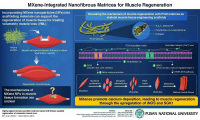-
Opdivo Plus Yervoy Reduces the Risk of Colorectal Cancer Disease Progression or Death by 79% Versus Chemotherapy
- Source: https://www.pharmexec.com/authors/don-tracy-associate-editor
- 76
- January 24, 2024
-
Immune checkpoint inhibitor target found to promote skin cancer growth
- Source: drugdu
- 97
- January 23, 2024
-
RecA protein skips “unwinding” step in DNA repair
- Source: drugdu
- 180
- January 23, 2024
-
Pusan National University Announces Potential Breakthrough for Muscle Regeneration Using Nanotech
- Source: drugdu
- 83
- January 23, 2024
-
Pfizer’s Talzenna recommended by NICE for advanced breast cancer
- Source: drugdu
- 84
- January 23, 2024
-
Biotech layoffs strike hard with PMV Pharma, Ikena, and Bayer sacking staff
- Source: drugdu
- 72
- January 23, 2024
-
Hai Zheng Pharmaceutical and Sinopharm Signed Strategic Cooperation Agreement on Retail Project
- Source: drugdu
- 71
- January 23, 2024
-
FastWave Medical kicks off first-in-human study of its IVL tech
- Source: drugdu
- 121
- January 22, 2024
-
Ultrasensitive Molecular Diagnostic Tools Detect Asymptomatic Malaria
- Source: drugdu
- 158
- January 22, 2024
-
New Algorithm Detects and Identifies Novel Bacterial Organisms
- Source: drugdu
- 128
- January 22, 2024
your submission has already been received.
OK
Subscribe
Please enter a valid Email address!
Submit
The most relevant industry news & insight will be sent to you every two weeks.













